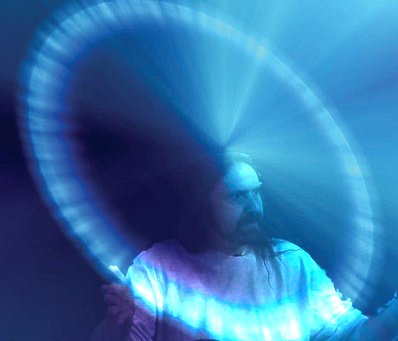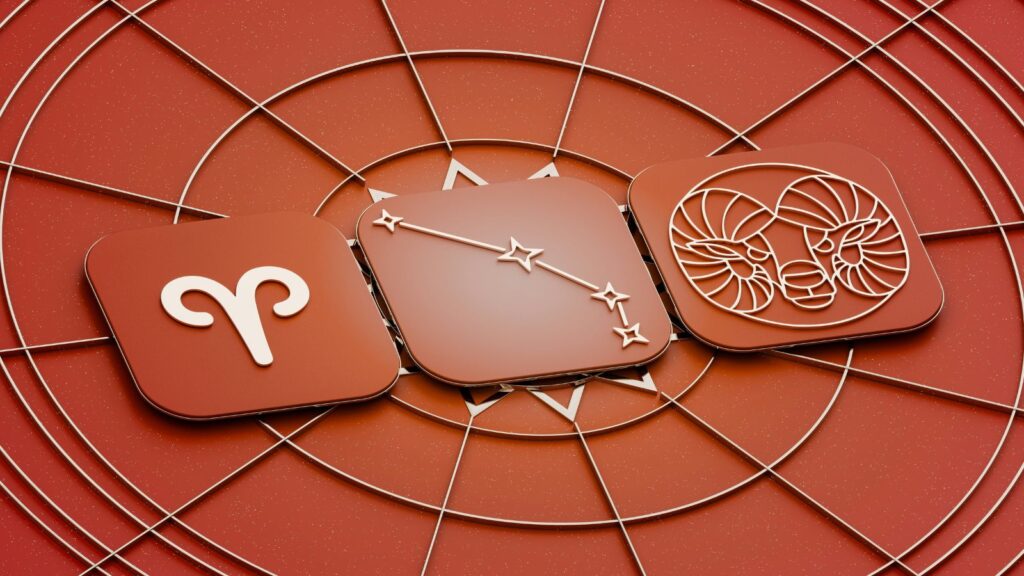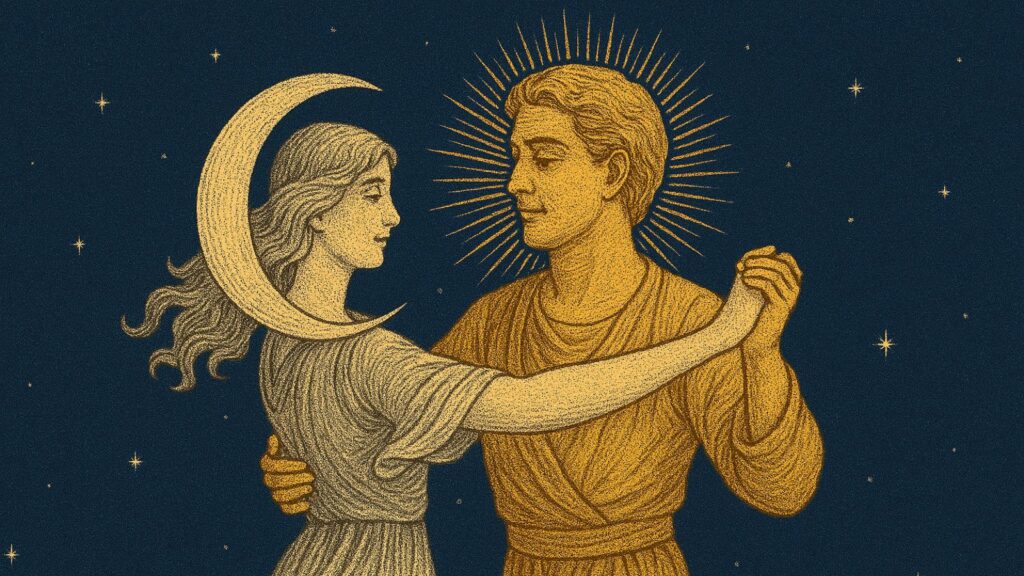When I first began my study of
magick, almost thirty years ago, I was fascinated and bewildered by the
numerous, often conflicting, systems for cataloging entities. Every school of
thought and every religion offered a pantheon of entities, avatars, teachers,
and earthly representatives. There were catalogs filled with icons, pantheons
crowded with gods and goddesses, angels organized in hierarchies more complex
than government offices, and demons lined up behind their bigger,
badder brethren. Even the most ostensibly monotheistic religions still had
lists of saints, prophets, teachers, legendary characters, and further subdivisions
of their One True, yet nonetheless divisible, God.
All these systems were fascinating,
of course, and I spent many days, weeks, months and years focused upon exploring them. I studied
Jung’s Man and His Symbols, pored
over Crowley’s 777, spread tarot
cards on my living room floor, tossed coins among the piles of tarot cards, and
created magic marker enneagrams, veves, and hieroglyphs. I soon found that a
few of these entities had the ability to affect me in surprising ways. Some I
found I was inexplicably drawn to – I wrote short stories and created tarot
cards for the god Pan for many years, performed rituals involving Aleister
Crowley’s triumvirate of Nuit, Hadit, and Ra-Hoor-Khuit and placed candy, rum and cigars on altars for
Voodoo loas, for instance. Similarly some entities repelled me–although most simply did
not touch me in any immediately significant way. But ultimately my question
about all of these was, “Why this
stuff?” The teaching was that these entities were symbols, archetypes from the
collective unconscious–from a Platonic dreamworld in which the proper
shapes of all things were stored.
I'm fine with the idea that our unconscious minds intersect someplace and that
we share the common implicit information that is the world beyond our immediate
awareness. It makes sense to me on a very practical level – that everything in
the universe influences everything else, no matter how slightly or
significantly and that information about everything is available everywhere,
if we have the ability to decode it. That still doesn’t offer an answer as to how
we came up with this particular stuff from among all the potential
shapes and forms, gods, angels, demons and symbols of the unperceived world.
What is it about that memetic complex that we call a god that makes it a god?
How was this stuff first derived? I wanted to understand the
nature of the gods and goddesses from books and esoteric lore that I had come
to love – ultimately, I wanted to find a pantheon within my own life and experience.
After some years of contemplating
this issue of the origin of archetypes, I decided that the emphasis on the
"stuff" was only half the equation. The stuff – the names, shapes, clothing and
bedroom habits of the gods – represents the content, the collection of ideas
and perceptions that we circle in a metaphysical Venn diagram to delineate
exactly what constitutes a particular entity. The answer to my question lay as
much within the circle as in the hand that pushes the pen to draw it – or rather in the mind
that guides that hand.
The question became, “What is
it about a particular collection of stuff
that fires off the part of my brain that recognizes it as something
meaningful?” What makes the character of Ganesh recognizable to worshipers as a
god, for instance? It’s a more complex question than it might appear on the
surface.
The first level to be peeled back
deals with how we recognize anything as conscious, as something with which we
can communicate. An intuitive Turing Test performed by the
unconsciousness mind seems to immediately categorize things into “conscious
entity” and “inanimate lump.” We look at each other and, hopefully, we
recognize one another as human and conscious and at least reasonably intelligent.
Some very simple visual patterns, for instance, seem to fire off this sense of
recognition – a smiley face, have-a-nice day symbol is recognizable to us as a
human face; a South Park cartoon character can be identified with–for a half hour at a time–as a conscious entity with the ability to communicate,
make decisions, and act– however stupidly–upon the world.
Linguistic patterns
also seem to have a similar ability to reveal the conscious state of an entity. A sentence formed with proper syntax
suggests that its writer or speaker is possessed of some measure of
intelligence. Based on such unconscious intuitions, we recognize writers
as conscious entities when we read their well-formed sentences. We recognize other
humans as such when we communicate with each other in text environments such as
Internet forums. And we even recognize fictional characters as entities for
whom we might predict behavior and sympathize. (What would Captain Kirk do?)
There are many behavioral patterns and cues that help us to,
unconsciously, tell the difference between a conscious entity and a brick of
cheese.
This all made much more sense to me
when I came across the concept of mirror
neurons. These are
physical structures in the brain which enable us to build predictive models of
intelligence or consciousness. In effect, mirror neurons build models of entities
and use our own consciousness as computing power to run those models. We look
at another person and we a) recognize them as another person, and b) try them
on for size to some degree. This suggests that mirror neurons are not only the
operative force behind empathy, sympathy, and most forms of communication, but
may also explain some of the phenomena involving gods and demons with which I
was struggling to understand.
First, let’s demonstrate how mirror
neurons work. The following exercises are excerpted from the Meta-Magick Invocation Workdbook (© 2008 Philip H. Farber, used with permission).
Watch Yourself Relax:
-
Imagine that
you can see yourself, or hear yourself, or feel yourself, as if observing
another person. Make it like looking at a movie or a picture of yourself.
If you are better at hearing or feeling, then hear yourself talking or
making sounds, or feel where your presence would be. -
Imagine that
this other self that you are observing is in a place that is very
comfortable and very, very relaxing. It’s not necessary to see, hear
or feel the place, just keep your attention on this other self. -
Watch, listen,
and/or feel as this other self becomes more and more relaxed, more and
more comfortable, and exhibits the effects of relaxation: softer muscles,
different posture, different facial expression, and so forth. -
Make changes
to the structure of the image (but not the content):
-
-
Make the image larger or smaller
-
Make the colors brighter or more muted
-
Emphasize the foreground as opposed to the
background, and vice versa -
Make the sounds or speech louder or quieter (if the
emphasis is on hearing rather than seeing) -
Speed up and slow down the action (works for all
senses) -
Move the image closer or farther away (works for
all senses) -
Give the image a soft glow or sparkles
-
-
Notice any
changes to your state as you experiment with these changes.
The above exercise deals not
just with our ability to recognize entity-hood in our dealings with external stuff,
but also with the things that we imagine, the dissociated images and entities
that we create in our minds. The very (im)material that gods, demons, and
imaginary friends are made from. Also notice how subtle changes in the form and
quality of our internal image have the ability to change our response to the
entity. Different configurations affect our consciousness in different ways.
Making the representation larger or smaller, brighter or dimmer, etc., will
often continue the process of making us more or less relaxed. Hopefully you
found a configuration that was wonderfully relaxing.
Although the above excersise was about our self-image, it gives us a start towards finding clues
to the anatomy of entities of any kind. And even better, we may notice some
direct connections between the anatomy of an entity and our own states of
consciousness.
Let’s consider for a moment our
criteria for recognizing something as god or goddess, demon or angel. There are,
generally, two major magical operations that involve these critters: invocation and evocation. Invocation is the drawing into oneself of a quality or
entity; evocation is the externalization of a quality or entity. In a
traditional invocation of Hermes, we might visit a temple of Hermes and
contemplate his image, or recite a descriptive poem in his honor, or create a
magick circle and bring into it only those things of Hermetic nature, so that
we might become more Hermetic ourselves. In a traditional evocation we might
summon a Goetic spirit into a triangle and question it about what would make
life better for us or constrain it to perform some task for us to that same
end. We perform these operations quite naturally in daily life, outside the
context of magick or mysticism. When we are inspired by another person or a
work of art, that is a kind of invocation. When we imagine conversations with
people who aren’t present, or attempt to verbally convince our computer
connection to go faster, we are engaging in mild forms of evocation.
Let’s say that, for the purposes of
this discussion, our entities become useful when we can use them to perform invocation
and evocation willfully and with well-defined intent. An entity suitable for
invocation could, ideally, change you in some desired way by contemplating the
entity and drawing it into yourself. An entity suitable for evocation would be
able to impart information or perform tasks according to your will. In our
Meta-Magical explorations, we hope to discover entities in relation to our own
states and our consciousness, rather than necessarily learning some previous
explorer’s version of a pantheon. (And when we all do this, perhaps we’ll find
that we have many of these entities in common.)
As in the preceding exercise, we
begin with an image of the self. Our hypothesis here is that a self image is
the very essence of entity-recognition. It is our basic reference point for
consciousness and can also help to reveal our own innate pantheons, the
entities who already inhabit our world of consciousness. To change that image
from our human self to that of a god, we have to tweak the parameters in order
for that image (or voice or feeling) to rise to the level of something useful
in invocation or evocation, something with the potential to change us through
interaction.
Instant God(dess):
-
Decide on a
quality that you either have and would like to enhance, or one that
you don’t have and would like to acquire. For instance, creativity,
compassion, patience, strength, assertiveness, financial skill,
adaptability, understanding, concentration, flexibility, love, sex appeal,
or whatever you decide upon. Make sure this quality is a positive one,
that is, it is one that stands on its own and is not expressed as a lack
of something else (for instance, “reduced stress” might be expressed here
as “relaxation”, “no more bad luck” might be expressed for these purposes
as “good luck” and so on). -
Breathe and
banish. Imagine a circle around yourself, at about the diameter of
your spread arms. Sit or stand in the center of that circle. Fill your
lungs completely, with a slow, even inhalation. As you inhale, allow your
attention to expand to fill the circle. As you exhale, slowly, evenly, and
completely, allow your attention to contract to a single point in the
center of your chest. Repeat at least three times. -
Create a
dissociated image of yourself (an image, voice or feeling of you as if
perceived by another person or in a recording), standing or sitting.
Eliminate background and any accessories, objects, props, and so on that
might be in your image, so that the image is just you. -
Begin to
adjust the physiology of the imagined person to include more and more
of your desired quality. Pay attention to and adjust facial expression,
posture, breathing, movements, skin tone, muscle usage and anything else
that might pertain. -
Adjust the
structure of the image (submodalities) for greater impact. Experiment
with image size, color depth and quality, image location, and special
effects such as glows, sparkles, shimmers. Take each of these to its
greatest intensity – for instance, the image could be increased to much
greater than life-size. If this image were a god of that particular
quality, how would these submodalities manifest? Just how big, bright,
loud, strong and sparkly is a god(dess) of x? -
Begin to add
in extra features and aspects from other humans, from animals,
machines as appropriate to a god(dess) of this quality. For instance, if
cunning and strength are useful to this entity, give it some qualities of
a tiger or other animal that might represent those qualities (head, body,
teeth, eyes, whatever). If enhanced intelligence or processing speed is
important, then maybe a computer chip or having a computer as an accessory
might work. Take as much time as is necessary to test out some of these
qualities. Notice which ones feel the best and keep them. Have fun with
this and make your image fantastic. -
Adjust
physiology to account for the additions. If you added a computer chip
to the brain, how would that be reflected in facial expression, breathing,
posture, etc.?
-
Contemplate
the image for at least 30 seconds.Pull the image
into the circle with you and draw it into you. Wear it like clothing,
wrap it around you, let it interpenetrate your body and mind. Let your own
body, posture, breathing, facial expression, etc. reflect what you saw in
this image. Let the memories of this (future) self who has already
resolved this basic need be your memories. Breathe and
banish. Be open to
thoughts, epiphanies, and suggestions from your unconscious mind that
may occur throughout the day as a result of this practice. -
This exercise and the early one are offered
here for demonstration purposes, to give some practical experience of the
relationship between entities and consciousness. For the most part, entities
produced or contacted in this way are personal ones, not necessarily god or
goddess archetypes familiar to us from the astral storehouse of sacred images.
However, sometimes they do rise to that level and first-time practitioners
occasionally find themselves face-to-face with deities who offer names and
abilities drawn from known pantheons and belief systems. -
The exercises demonstrate an extremely stripped-down and basic mode of working. There are
endless modifications and enhancements to these processes of deriving personal
pantheons from our unconscious minds. At some point, they become much more than
simple demonstrations of a point – but I’ll leave that, for now, to your own
imagination and experience…
(…And before you’re off to read the
next article, I’ll just note that to fully understand the point that this piece
dances around, no matter how well you think you get it on an intellectual
level, it is most likely necessary to actually perform the experiments. You
have to look through the microscope and adjust the focus before you really know
what a micro-organism is like. And it likewise helps to change the focus of
your mind before you really understand the nature of the entities all around us,
including gods, goddesses, demons, angels, imaginary friends, ideologies,
corporations, schools of art, mass movements and those mysterious bipeds we
call “human.”)













